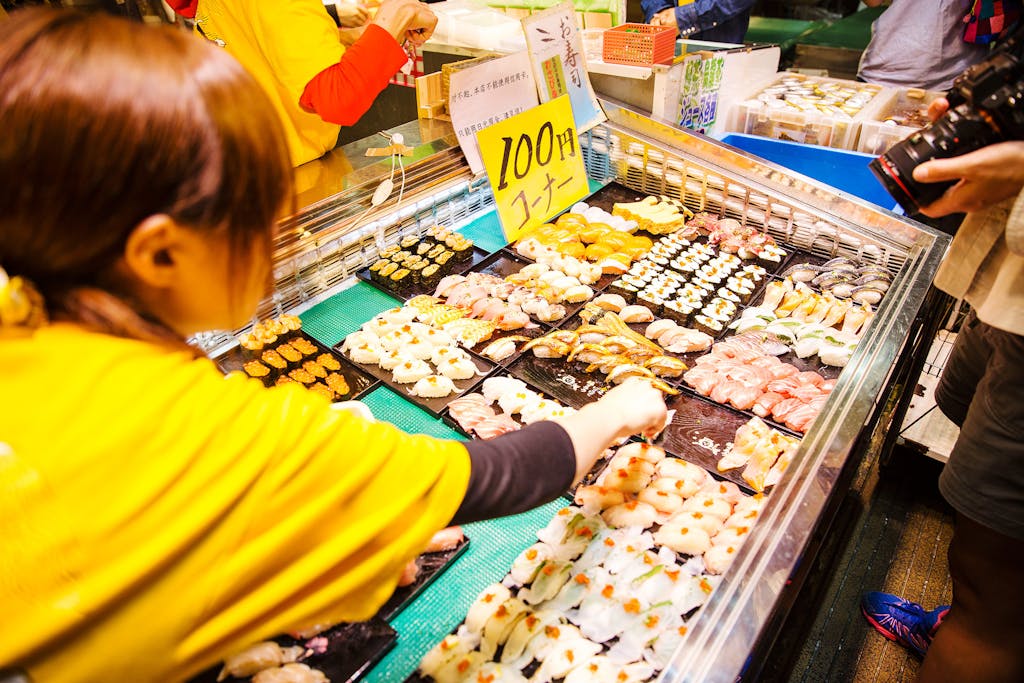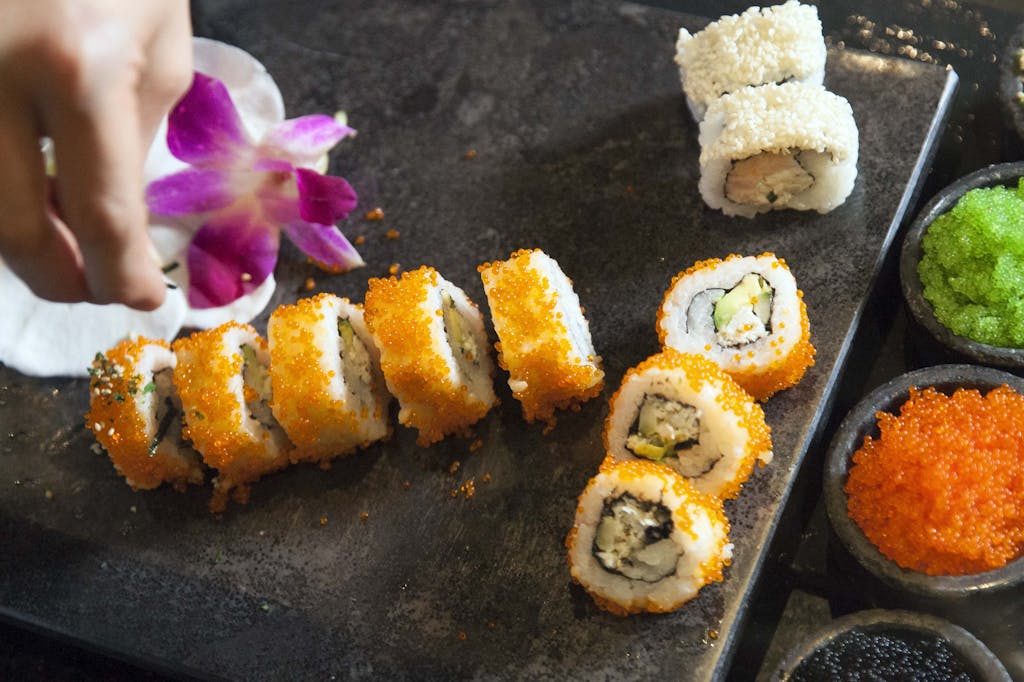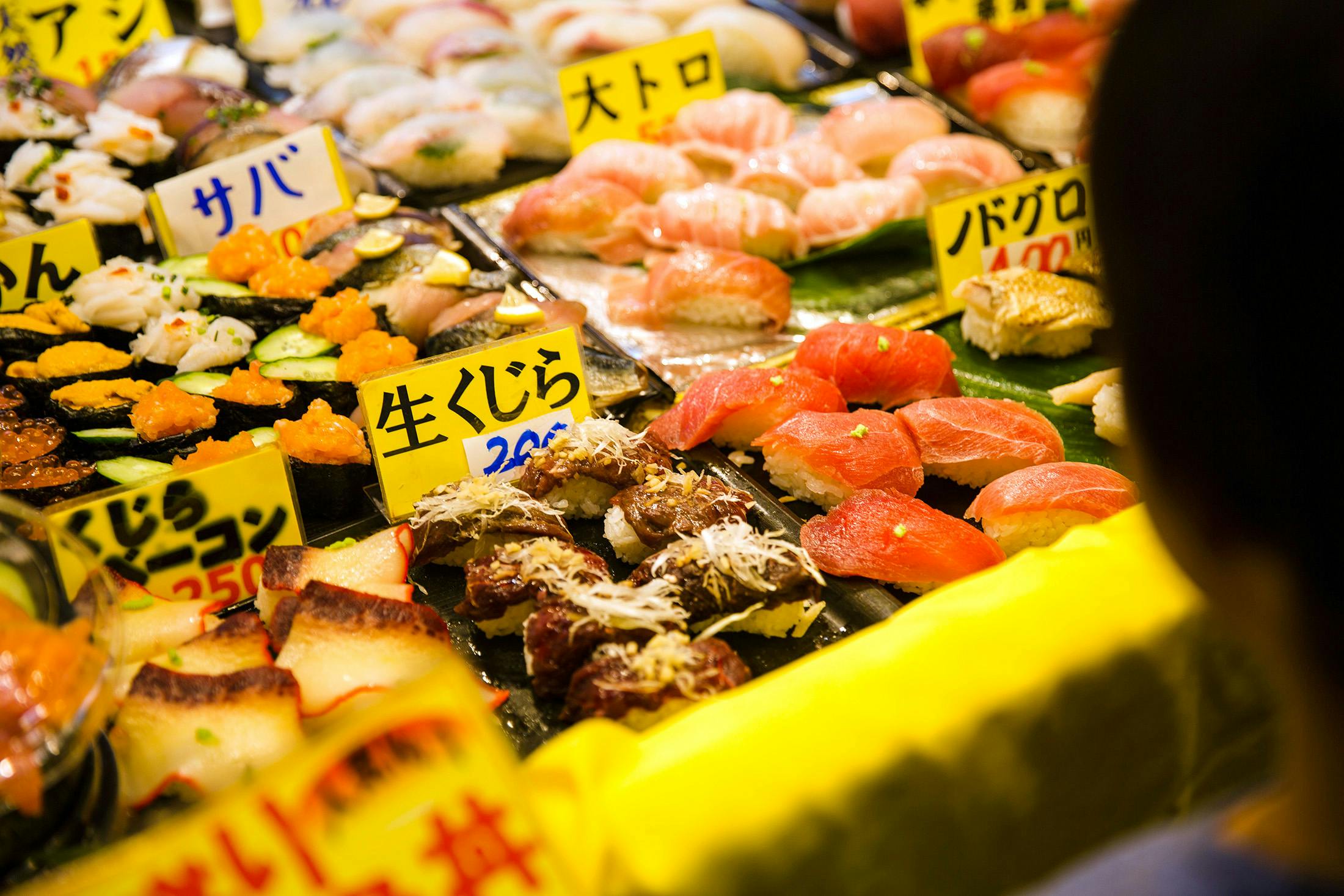Fresh Sushi and Japan Go Hand in Hand
Japan is renowned for its precise and exacting food culture, in which no small detail is overlooked. It is, for example, the cuisine that has yielded multicourse kaiseki meals and slow-simmered ramen broths.
Sushi: A cultural staple
Perhaps the most well-known Japanese culinary export, however, is sushi. Some of the best fresh sushi meals of my life, composed of fatty tuna or luscious hamachi, were savored at a Japanese fish market, first thing in the morning. From the Karato market in Shimonoseki to the Maizuru seafood market in Kyoto, freshly caught fish is both a diet staple and big industry in Japan.
Sushi is technically defined as a way to prepare rice, and it doesn’t necessarily need to include fish, although the dish is now closely associated with it. The dish originates from Southeast Asia, when, during the second century, meat and fish were wrapped in rice to preserve their freshness. The Japanese later started fermenting their cured fish and rice with sake. Then, vinegar was added to speed up the fermentation process, which also made the rice edible. It resulted in the sushi we’re familiar with today.

Culinary simplicity
Surrounded by oceans, Japan has an abundance of fish. During the 19th century, chefs began using raw fish, and this style became known as Edo-style sushi. Some 100 years later, Tokyo chefs then began placing fresh fish atop rice, creating hand-formed nigiri sushi. This invention by Yohei Hanaya, often considered the father of sushi, was an expansion on offerings. Since then, sashimi has provided an easier to prepare, rice-less option.
Today, there’s a sushi restaurant in almost every major city around the world. But how often do the Japanese actually eat their most popular culinary export? And how does it differ from sushi prepared abroad? I was also curious about what the art of sushi making actually entails. I asked Richard Weichbold, Silversea’s fleet corporate chef, to provide some insights.

A timeless tradition
Firstly, given that fresh sushi is such an integral part of Japanese culture, Weichbold doesn’t think traditional Japanese customs will ever change. It remains a staple of the Japanese diet, most often eaten once or twice a month.
Outside of Japan, the food components vary from country to country. But top quality ingredients, namely the best fish possible, make all the difference, according to Weichbold. “The main difference, I believe, is that sushi in Japan is all about the key basic elements that make sushi: rice and fish or seafood,” he explained. “It has to be the best quality rice and sushi-grade fish you can source, and then treated with respect in the preparation process.”

Exploring a Japanese fish market
As far as sourcing top ingredients is concerned, Tsukiji fish market in Tokyo was the most famous in the world for more than 80 years. It has closed, however, and Toyosu market has replaced it. Here, the traditional tuna auction continues to take place on a smaller scale and in more modern surroundings.
Weichbold assured me that there are many markets in Japan and around the world where equally high-quality products can be sourced. The chef and his team source seafood at select markets, depending on their location.

As much of an experience as it is to wander the fish markets and sample the catch of the day, high-quality sushi-grade fish is often frozen and tastes equally good. “The best fish used in sushi is caught fresh and then immediately flash frozen on board the vessel to preserve the freshness,” Weichbold explained.
The great pride the Japanese take in their culture and heritage is undoubtedly reflected in their food. Even though there are only a few components needed in preparation, the process of cooking the rice to perfection, balancing the flavor of the rice, and expertly cutting the fish takes years to master. Wiechbold said, “To work with and make sushi you need to be patient and respectful, and this certainly reflects on Japanese culture in my view.” As a lover of fresh sushi, I couldn’t agree more.
Excited to taste the authentic flavors of Japan on your next voyage? Silversea’s Japan itineraries call on multiple ports, allowing for culinary immersion.
